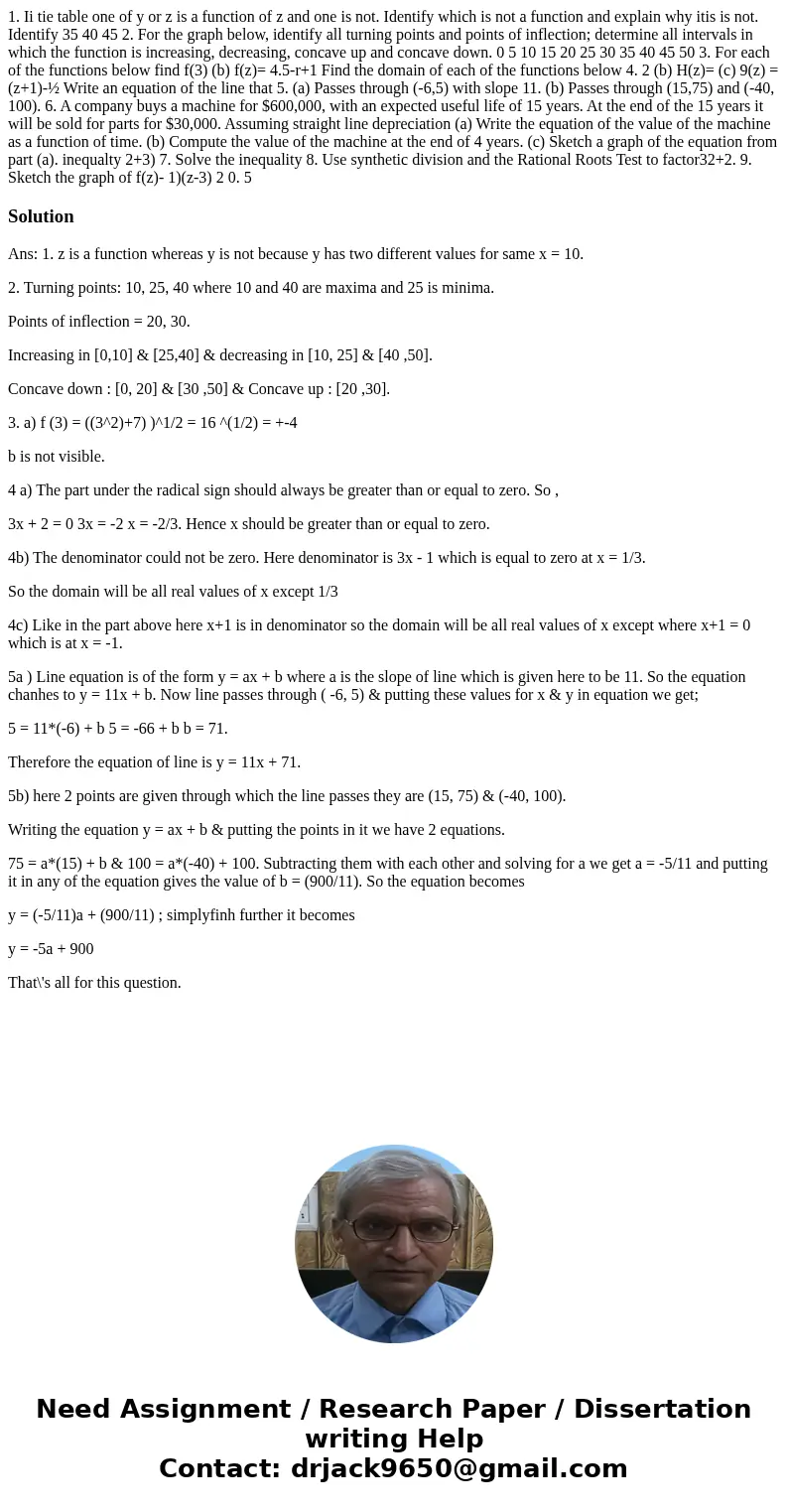1 Ii tie table one of y or z is a function of z and one is n
Solution
Ans: 1. z is a function whereas y is not because y has two different values for same x = 10.
2. Turning points: 10, 25, 40 where 10 and 40 are maxima and 25 is minima.
Points of inflection = 20, 30.
Increasing in [0,10] & [25,40] & decreasing in [10, 25] & [40 ,50].
Concave down : [0, 20] & [30 ,50] & Concave up : [20 ,30].
3. a) f (3) = ((3^2)+7) )^1/2 = 16 ^(1/2) = +-4
b is not visible.
4 a) The part under the radical sign should always be greater than or equal to zero. So ,
3x + 2 = 0 3x = -2 x = -2/3. Hence x should be greater than or equal to zero.
4b) The denominator could not be zero. Here denominator is 3x - 1 which is equal to zero at x = 1/3.
So the domain will be all real values of x except 1/3
4c) Like in the part above here x+1 is in denominator so the domain will be all real values of x except where x+1 = 0 which is at x = -1.
5a ) Line equation is of the form y = ax + b where a is the slope of line which is given here to be 11. So the equation chanhes to y = 11x + b. Now line passes through ( -6, 5) & putting these values for x & y in equation we get;
5 = 11*(-6) + b 5 = -66 + b b = 71.
Therefore the equation of line is y = 11x + 71.
5b) here 2 points are given through which the line passes they are (15, 75) & (-40, 100).
Writing the equation y = ax + b & putting the points in it we have 2 equations.
75 = a*(15) + b & 100 = a*(-40) + 100. Subtracting them with each other and solving for a we get a = -5/11 and putting it in any of the equation gives the value of b = (900/11). So the equation becomes
y = (-5/11)a + (900/11) ; simplyfinh further it becomes
y = -5a + 900
That\'s all for this question.

 Homework Sourse
Homework Sourse